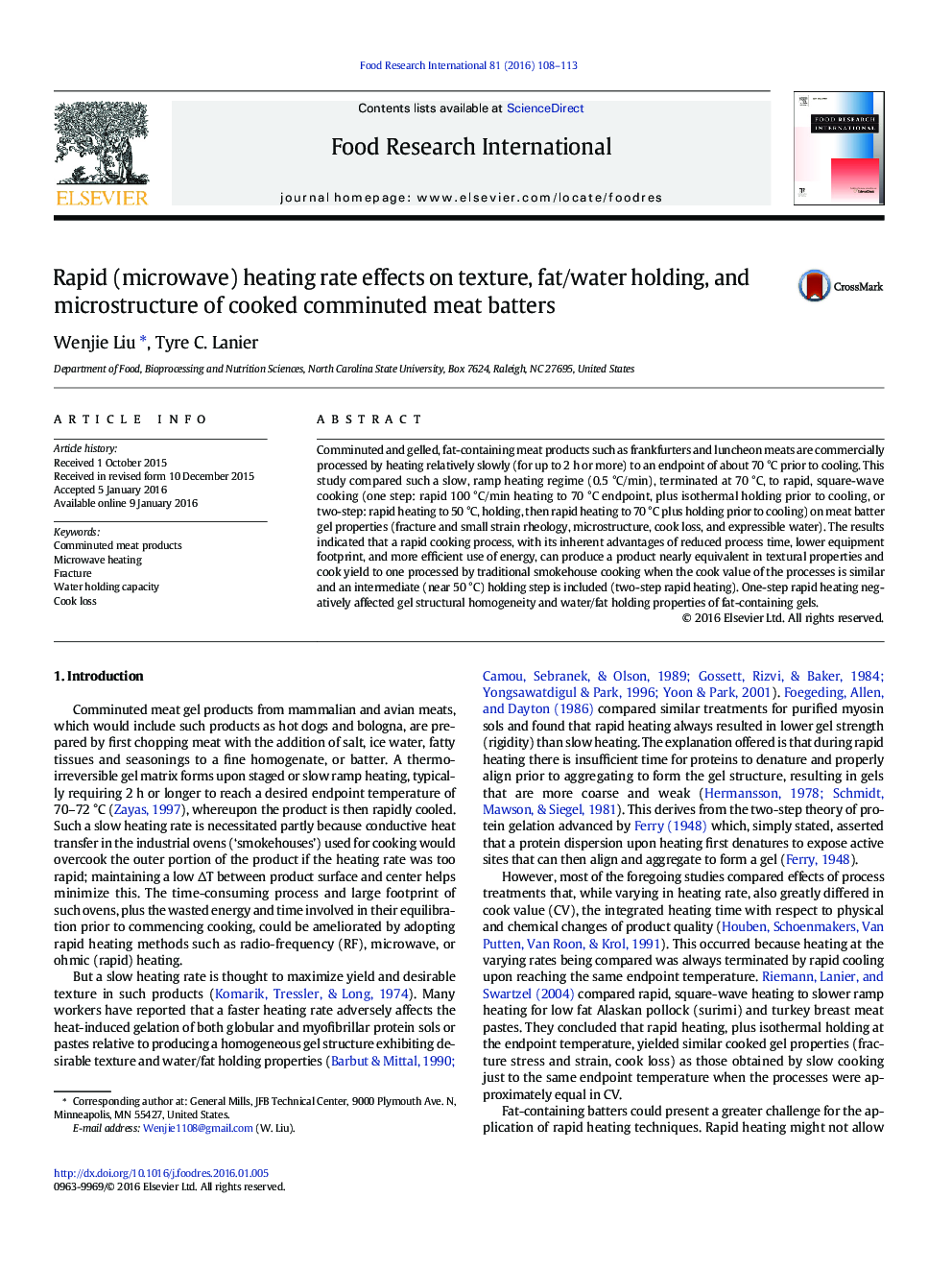| کد مقاله | کد نشریه | سال انتشار | مقاله انگلیسی | نسخه تمام متن |
|---|---|---|---|---|
| 4561252 | 1628467 | 2016 | 6 صفحه PDF | دانلود رایگان |
• Rapid heating can produce equivalent product properties as slower ramp heating.
• Two-step rapid heating/holding scheme was preferable to one-step.
• Minimum cook value is required to build microstructure, regardless heating process.
• Cook value is a valuable guideline to make good fat/water stability in meat gel.
Comminuted and gelled, fat-containing meat products such as frankfurters and luncheon meats are commercially processed by heating relatively slowly (for up to 2 h or more) to an endpoint of about 70 °C prior to cooling. This study compared such a slow, ramp heating regime (0.5 °C/min), terminated at 70 °C, to rapid, square-wave cooking (one step: rapid 100 °C/min heating to 70 °C endpoint, plus isothermal holding prior to cooling, or two-step: rapid heating to 50 °C, holding, then rapid heating to 70 °C plus holding prior to cooling) on meat batter gel properties (fracture and small strain rheology, microstructure, cook loss, and expressible water). The results indicated that a rapid cooking process, with its inherent advantages of reduced process time, lower equipment footprint, and more efficient use of energy, can produce a product nearly equivalent in textural properties and cook yield to one processed by traditional smokehouse cooking when the cook value of the processes is similar and an intermediate (near 50 °C) holding step is included (two-step rapid heating). One-step rapid heating negatively affected gel structural homogeneity and water/fat holding properties of fat-containing gels.
Journal: Food Research International - Volume 81, March 2016, Pages 108–113
